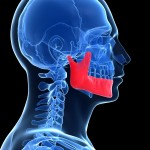
Mandibular condylar fractures (MCFs) occur in about a third of mandibular fractures treatment options include surgical and non-surgical (functional) approaches. There is ongoing debate regarding the best approach. The aim of this review was to verify whether there is a significant difference in the clinical outcomes and post-treatment complications between the surgical and the non-surgical treatment of unilateral or bilateral MCFs, in patients of any age or gender.
Methods
The PubMed, Web of Science, and the Cochrane Oral Health Group Trials Register databases were searched without language restrictions. This was supplemented by manual searches of a number of relevant dental journals and the reference lists of identified article. Randomized controlled trials (RCTs), controlled clinical trials (CCTs), or retrospective studies comparing the clinical outcomes between surgical and non-surgical treatment of MCFs, and reporting the incidence of post-treatment complications were considered. Risk of bias in the included studies was assessed.
The dichotomous outcomes post-treatment complications evaluated were infection, post-treatment disturbance in occlusion, malunion, non-union, TMJ noise/click/sound, and TMJ pain. The continuous outcomes evaluated were the duration of the operation, maximum inter- incisal opening (MIO), laterotrusion (lateral excursion), protrusion (protrusive movement), and the lateral deviation during MIO
Results
- 36 studies were included. 5 RCTs, 13 CCTs, and 18 retrospective studies.
- Inclusion criteria were heterogeneous
- 1982 patients were enrolled in the 36 studies, with 1094 MCFs in the surgical treatment group and 1307 MCFs in the non-surgical treatment group.
- All 36 studies were considered to be at high risk of bias.
| Dichotomous outcomes | Risk Ratio | 95% CI | Probability |
| Post-treatment malocclusion | 0.46 | 0.34–0.62 | P < 0.00001 |
| Lateral deviation during MIO | 0.56 | 0.43–0.74 | P < 0.0001 |
| Post-treatment infection | 3.43 | 1.10–10.75 | P = 0.03 |
| TMJ pain | 0.81 | 0.46–1.42 | P = 0.46 |
| TMJ noise | 1.44 | 0.78–2.65 | P = 0.24 |
| Continuous outcomes | Mean Difference | 95% CI | Probability |
| Protrusion, | 0.68 | 0.14–1.22 | P = 0.01 |
| laterotrusion | 0.53 | 0.05–1.01 | P = 0.03 |
| Lateral deviation during MIO | -0.75 | -1.23 to -0.27 | P = 0.002 |
Conclusions
The author concluded
The results of the present meta-analysis suggest that the surgical treatment of MCFs provides a better clinical outcome with regard to post-treatment malocclusion, protrusion, laterotrusion, and lateral deviation during MIO in comparison to non-surgical treatment. On the other hand, patients are more affected by post-treatment infection when a surgical treatment is performed. There was no statistically significant difference in post-treatment TMJ pain, TMJ noise, or MIO when the two techniques were compared.
Commentary
We have previously covered reviews of this topic that have been restricted to RCTs (Dental Elf -30th May 2013) or have considered the evidence of poor quality and not strong enough to change clinical practice (Dental Elf -20th Apr 2012). This review has also found all the included studies to be at high risk of bias so author has taken the decision to include all the studies in the meta-analysis. The reviews discussion highlights the key problem with this approach ie that the potential for bias is higher in non-randomised studies. This needs to be taken into account when considering the reviews findings. The review by Lui et al we considered in 2013 only included 4 RCTs involving a total of 177 patients they also concluded that a surgical approach was better. However, as Chrcanovic points out in this review the terminology surrounding MCFs is confused which adds difficulty this area.
Links
